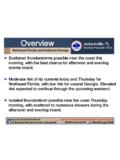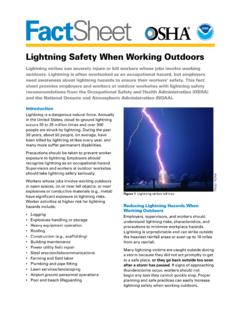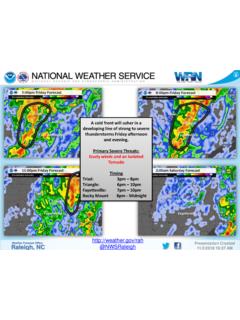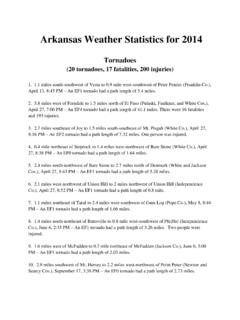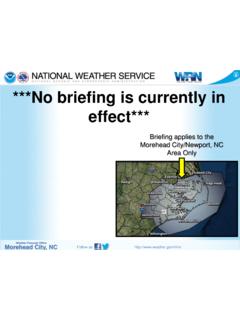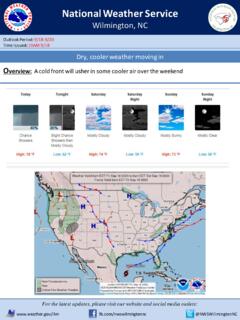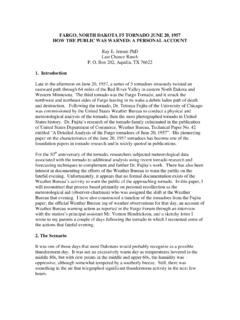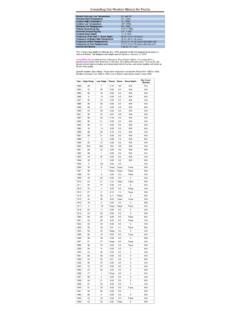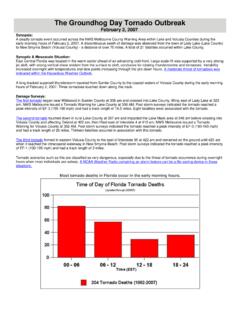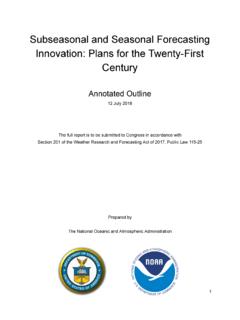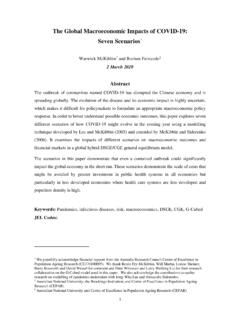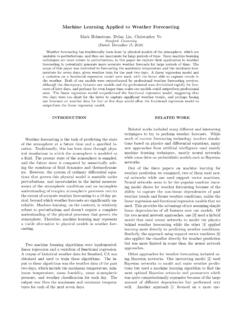Transcription of Numerical Weather Prediction (Weather Models)
1 Numerical Weather Prediction ( Weather Models) Numerical Weather Prediction (NWP) is a method of Weather forecasting that employs a set of equations that describe the flow of fluids. These equations are translated into computer code and use governing equations, Numerical methods, parameterizations of other physical processes and combined with initial and boundary conditions before being run over a domain (geographic area). Almost every step in NWP includes omissions, estimations, approximations and compromises. Governing Equations Conservation of momentum (Newton s laws) Conservation of mass Conservation of energy Ideal gas law The graphic depicts some of the physical processes and parameters that are typi-cally parameterized, both because they cannot be explicitly predicted in full de-tail in model forecast equations Numerical Methods Created because computers can perform arithmetic but not calculus Used to convert spatial and temporal derivative into equations that computers can solve Numerical methods directly affect model output.
2 Mostly at small scales Parameterizations Each important physical process that cannot be directly predicted requires a parameterization scheme based on reasonable physical or statistical representations. Used to approximate the bulk effects of physical processes too small, brief, complex or poorly understood to be explicitly represented by the governing equations and/or Numerical methods. Initial and Boundary Conditions Initial conditions define the atmosphere s current starting point. Boundary conditions define the atmosphere s state and the domains edges Ensemble forecasting Explained Forecasters have always understood the value of examining multiple Numerical Weather Prediction (NWP) forecasts to help produce a more reliable forecast.
3 One way they have done this is by comparing several different NWP forecasts. They may have compared regional to global model forecasts, or compared forecasts from the models used at different NWP centers. They have also done this by comparing different model runs from the same model , looking at how new observations change model forecast outcomes over time. Ensemble Prediction is a relatively new tool for operational forecasting that allows for more rapid and scientifically based comparisons of multiple model forecasts. Ensemble products, like the spaghetti diagrams below, use various statistical and graphical methods to combine multiple model runs, each based on slightly different initial conditions or using slightly different model configurations and/or parameterizations.
4 By doing so, they can include information about the level of uncertainty, the most likely forecast outcomes, and probabilities of those outcomes. With ensemble Prediction products added to their NWP toolkit, forecasters now have another level of information that will help them make intelligent use of NWP guidance in their forecast process. These images, known as spaghetti plots, are examples of two ensemble solutions. Each line represents one model solution. The clustering of solutions on the left depict a solution resulting in high confidence, while the image on the right shows very different possible solutions resulting in low confidence.
5 Low spread = High Confidence Large spread = Low Confidence
